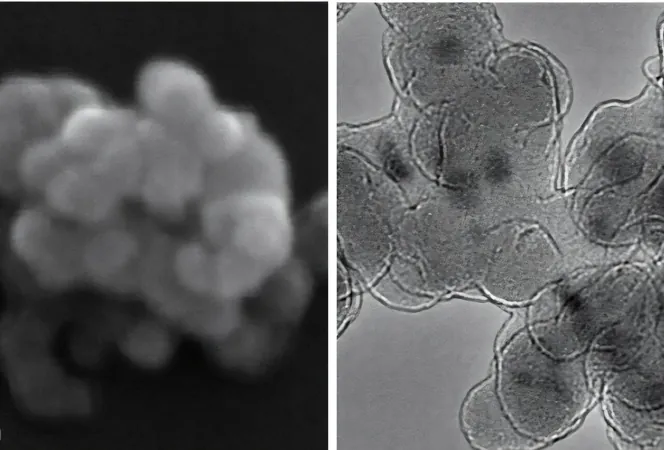
Revolutionary Nanocrystals Could Be the Key to Combatting Bacteria with Just Light!
2024-11-27
Author: Rajesh
Exciting advancements in the field of microbial combat have emerged from Rice University, where researchers have unveiled newly designed halide perovskite nanocrystals (HPNCs). These nanocrystals, notable for their stability, effectiveness, and ease of production, hold great promise as antimicrobial agents capable of destroying bacteria in biofluids when exposed to visible light—overcoming major issues with degradation typically associated with these materials.
Lead scientist Yifan Zhu and his team have dedicated nearly three years to perfect a specific type of HPNC that offers robust performance without succumbing to light and moisture degradation. Their innovative approach, which involves applying two thin layers of silicon dioxide, has proven substantially more effective than previous methods that relied on a single-layer coating—typically leading to a staggering 63% loss of antimicrobial effectiveness in just one day.
HPNCs boast remarkable optical and electrical properties, making them ideal candidates for various applications including solar power, bioimaging, and photocatalysis, the process where light accelerates chemical reactions. One vital reaction involves generating reactive oxygen species, which are lethal to biological contaminants such as bacteria. However, water-induced degradation has limited the application of these nanocrystals in medical and water treatment environments.
With escalating concerns regarding antibiotic resistance and the rise of emerging pathogens, the efficacy of these nanocrystals in killing bacteria has become more significant than ever. Tests revealed that when illuminated with low levels of visible light, the lead and bismuth-based HPNCs obliterated over 90% of E. coli bacteria within a six-hour period. Remarkably, no significant degradation of the HPNCs occurred over the four-day testing phase.
The benefits of the double-layer silicon dioxide approach became even clearer as analysis indicated that the lead-based HPNCs released only trace amounts of lead—well below World Health Organization safety limits. This is crucial given the ongoing debate about lead's safety in biomedical applications. Bismuth-based HPNCs, while slightly less effective, offer a safer alternative eliminating lead entirely, striking the right balance between performance and safety.
These research findings underscore the potential for HPNCs to function as photocatalytic antimicrobial agents, paving the way for innovative water treatment techniques aimed at eliminating harmful organic contaminants. But the enthusiasm doesn't end there; future research could also open doors to using HPNCs in therapeutic settings, addressing a range of water contaminants, and ensuring safety and effectiveness in real-world applications.
Experts believe these advancements could soon transition from laboratory experiments to tangible solutions in water and public health sectors. "After years of dedicated research, we're now on the cusp of making these materials a practical reality," said Jun Lou, a prominent materials science professor involved in the study. This work could revolutionize our approach to sanitation and hygiene, heralding a new age in antimicrobial technology!

 Brasil (PT)
Brasil (PT)
 Canada (EN)
Canada (EN)
 Chile (ES)
Chile (ES)
 España (ES)
España (ES)
 France (FR)
France (FR)
 Hong Kong (EN)
Hong Kong (EN)
 Italia (IT)
Italia (IT)
 日本 (JA)
日本 (JA)
 Magyarország (HU)
Magyarország (HU)
 Norge (NO)
Norge (NO)
 Polska (PL)
Polska (PL)
 Schweiz (DE)
Schweiz (DE)
 Singapore (EN)
Singapore (EN)
 Sverige (SV)
Sverige (SV)
 Suomi (FI)
Suomi (FI)
 Türkiye (TR)
Türkiye (TR)